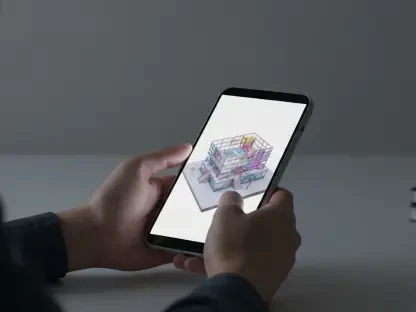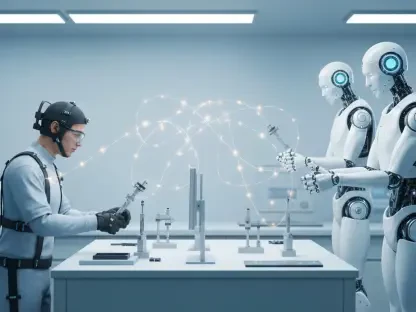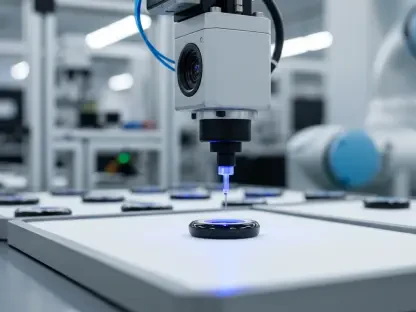Imagine a world where robots can effortlessly turn a doorknob in a cramped hallway or replace a lightbulb in a tight closet corner with the same ease as a human hand, thanks to a groundbreaking innovation from Yale University. This vision is becoming reality as researchers have developed the Sphinx robotic hand—a mechanism set to transform robotic capabilities. Traditional robotic wrists, often hindered by their bulk and complexity, struggle with precise tasks in unstructured or confined environments. Under the guidance of Professor Aaron Dollar, the Yale team has introduced a sleek, simplified design that tackles these persistent challenges. By merging gripping and rotational functions into a compact unit, this advancement promises to redefine how robots interact with the world, opening doors to applications in homes, industries, and even disaster zones. This exploration delves into the technical marvel of the Sphinx hand and its far-reaching implications for the future of robotics.
Technical Breakthroughs of the Sphinx Hand
Redefining Wrist Mechanics
The Sphinx hand stands out as a remarkable feat of engineering, primarily due to its integration of grasping and rotational functions into a single spherical mechanism. Unlike traditional robotic wrists, which are positioned far from the object being manipulated and require cumbersome arm movements, this design operates directly at the point of contact. It enables fluid rotation across all three axes—roll, pitch, and yaw—allowing for precise control without the need for extensive repositioning. This unified approach not only enhances dexterity but also addresses a critical flaw in conventional systems, where mechanical complexity often leads to inefficiency. The result is a robotic hand capable of mimicking human-like movements with unprecedented accuracy, setting a new standard for manipulation in varied tasks.
Another key aspect of the Sphinx hand is its deliberate focus on simplicity over technological complexity. The Yale team, led by Professor Aaron Dollar and Ph.D. candidate Vatsal Patel, opted to forgo reliance on sophisticated sensors or cameras, instead prioritizing a robust mechanical structure. This choice reduces both the cost and the potential points of failure, making the mechanism more reliable for real-world applications. By stripping away unnecessary components, the design achieves versatility through pure engineering ingenuity. Such an approach ensures that the Sphinx hand can be more easily manufactured and maintained, broadening its accessibility for developers and industries aiming to integrate advanced robotic solutions into their operations.
Efficiency in Confined Spaces
One of the most compelling features of the Sphinx hand is its ability to operate efficiently in confined spaces, a challenge that has long plagued robotic systems. Traditional designs often demand significant room to maneuver, as their wrist mechanisms are distanced from the grasped object, leading to large, inefficient arm motions. In contrast, the Sphinx hand’s compact structure allows it to perform intricate tasks, like screwing in a lightbulb in a narrow space, with minimal spatial requirements. This space-saving design not only boosts operational efficiency but also makes robots more practical for environments where every inch counts. The potential to execute precise movements without sprawling arm adjustments marks a significant leap forward in robotic functionality.
Beyond its spatial advantages, the Sphinx hand demonstrates practical value across a spectrum of real-world scenarios. In domestic settings, it could enable robots to handle everyday chores in tight quarters, such as organizing cluttered shelves or assembling furniture in small rooms. In emergency response situations, such as navigating rubble at disaster sites, the mechanism’s ability to manipulate objects in constrained areas could prove invaluable. Faster task completion, driven by the hand’s streamlined movements, further enhances its appeal for industrial applications where time is critical. By addressing the limitations of space and speed, the Sphinx hand opens up new possibilities for robotic deployment in settings previously considered too challenging for automated systems.
Broader Implications for Robotics
Adapting to Unstructured Environments
As robotics continues to evolve, a clear trend emerges: the push for systems that can thrive in unstructured environments like homes, hospitals, and disaster zones. The Sphinx hand directly addresses this need by overcoming the limitations of traditional wrist mechanisms, which often falter when faced with unpredictable settings. Its compact, integrated design allows robots to adapt to varying conditions, whether handling objects of different shapes or navigating confined spaces. This adaptability is crucial for tasks that require a human-like touch, such as assisting in medical procedures or sorting through debris after a natural disaster. The Yale team’s innovation aligns seamlessly with the industry’s shift toward creating robots that can operate beyond the controlled confines of factories, marking a pivotal step in their integration into everyday life.
The versatility of the Sphinx hand also holds transformative potential for specific sectors where adaptability is paramount. In healthcare, robots equipped with this mechanism could perform delicate tasks, such as adjusting medical equipment in tight spaces or aiding in patient care with precision. In disaster response, the ability to manipulate objects amidst chaos and confined areas could enhance rescue operations, saving time and lives. Unlike older robotic systems tethered to predictable environments, the Sphinx hand equips machines to tackle unforeseen challenges with finesse. This capability not only broadens the scope of robotic applications but also underscores the importance of designing tools that mirror human dexterity, ensuring robots can contribute meaningfully in dynamic, real-world contexts.
Collaborative Innovation
A standout feature of the Sphinx hand’s development is its availability through the Yale OpenHand project, which offers design files and build instructions to the global robotics community. This open-source approach breaks down barriers to innovation, allowing researchers, engineers, and developers worldwide to access and experiment with the mechanism. By sharing their work freely, the Yale team fosters an environment of collective progress, where diverse perspectives can refine and adapt the Sphinx hand for various uses. Such transparency is rare in a field often marked by proprietary constraints, and it highlights a commitment to advancing robotics as a shared endeavor. The potential for widespread adoption and iteration could accelerate the pace of breakthroughs in robotic dexterity.
The impact of this collaborative spirit extends beyond mere access to technology, as it encourages a community-driven approach to solving complex challenges in robotics. Developers from different regions and disciplines can build upon the Sphinx hand’s foundation, tailoring it to meet specific needs, whether in industrial automation or personal assistance devices. This shared effort could lead to rapid advancements, as feedback and modifications from varied users refine the design over time. Moreover, the open-source model democratizes innovation, enabling smaller organizations or independent researchers to contribute without the burden of high development costs. Looking back, the decision to make this design publicly available was a catalyst that sparked a wave of creativity and progress, setting a precedent for how collaboration can drive the field forward.









